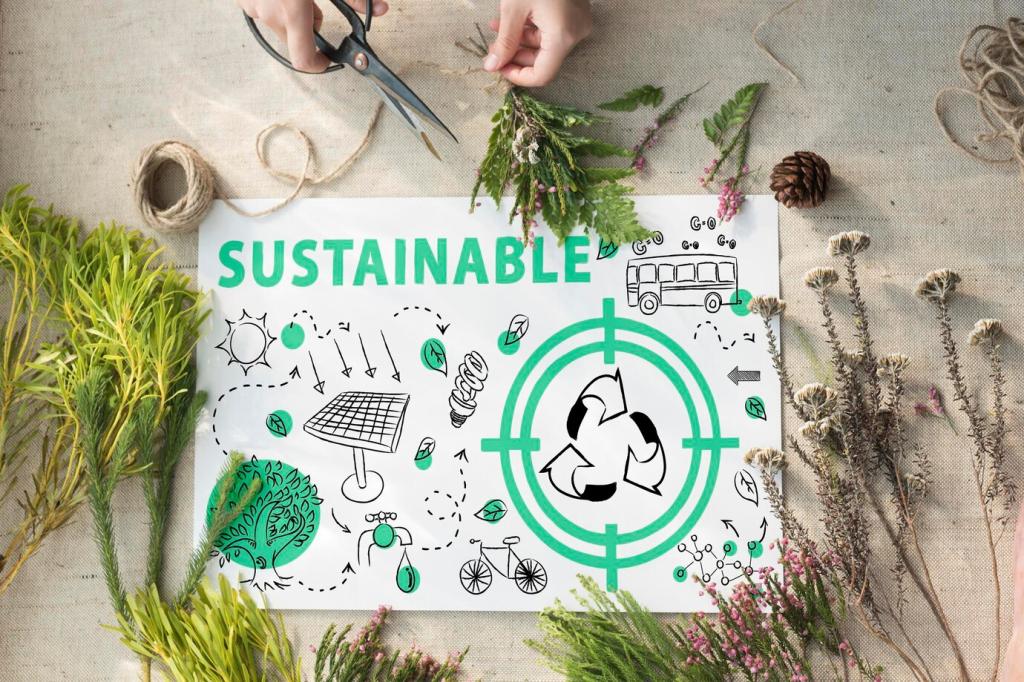
Crafting Persuasive Messages for Green Marketing
Discover how to design impactful green marketing messages that not only inform, but also inspire and motivate consumers to make sustainable choices. By understanding the principles behind persuasive communication and the unique values of eco-conscious audiences, businesses can create campaigns that resonate deeply, foster loyalty, and drive lasting behavior change. This guide explores the core elements of compelling green marketing messaging, emphasizing the importance of authenticity, emotional connection, and practical guidance in promoting environmentally friendly products and practices.
Understanding the Green Consumer Mindset
Values-Driven Purchasing Decisions
Green consumers often base their purchase decisions on deeply held personal and environmental values. Unlike traditional shoppers, they seek assurance that the products they buy align with their ecological worldview and contribute positively to the planet. Messages that highlight shared values—such as a commitment to reducing carbon footprints, conserving resources, or supporting fair-trade practices—are more likely to establish trust and inspire action. When brands demonstrate that sustainability is woven into their core mission, not just an add-on feature, consumers feel validated in their choices and are more willing to advocate on behalf of the brand.
The Role of Trust and Transparency
Establishing trust is crucial in green marketing, where skepticism about “greenwashing” runs high. Consumers demand open communication about sourcing, production processes, and the veracity of environmental claims. Messages that disclose relevant information, such as third-party certifications or measurable impacts, convey authenticity and reassure audiences. When brands openly acknowledge both their achievements and ongoing challenges in sustainability, they foster a relationship of transparency and mutual respect. This not only drives initial purchases but also lays the groundwork for long-term brand loyalty.
Emotional Engagement and Empowerment
Emotional resonance is a powerful tool in the green marketer’s arsenal. Messages that tap into feelings—whether hope, concern, or pride—can motivate consumers to alter their behaviors and advocate for change. Narratives that frame sustainable choices as personally meaningful, rather than obligatory sacrifices, empower individuals to feel part of a greater movement. By highlighting the tangible impact that each customer’s actions can have, such messaging transforms passive awareness into active participation, leading to deeper and more sustained engagement with eco-friendly brands.
Employing Storytelling to Enhance Message Impact
Creating Relatable, Authentic Narratives
Authenticity is crucial when sharing stories that promote green initiatives. Consumers can easily spot disingenuous or exaggerated tales, which risk undermining goodwill and credibility. By centering narratives around real people—whether passionate employees, loyal customers, or community members—brands humanize their sustainability journey. Sharing candid accounts of both successes and setbacks demonstrates honest commitment, inviting audiences to witness and participate in the process of positive change rather than just the end results.
Making Sustainability Tangible Through Story
Concepts like carbon reduction or circular economies can feel abstract without concrete illustration. Storytelling allows marketers to transform these ideas into relatable realities by following the journey of a single product, tracing the daily impact of a community project, or illustrating the before-and-after effects of a sustainable shift. When consumers see the real-world results of green initiatives, such as thriving wildlife habitats or reduced landfill waste, the significance of their choices becomes tangible. These narratives make abstract principles accessible and personally relevant.
Inspiring Action With Visionary Story Arcs
Green marketing stories should not only inform and connect, but also challenge and inspire. Visionary storytelling paints a picture of a better future, showing consumers what’s possible when individuals and brands commit to sustainability. By mapping a pathway from current challenges to hopeful outcomes, these stories mobilize audiences to become participants in a larger movement. Whether through calls to action, invitations to share their own experiences, or depictions of collective impact, visionary narratives drive audiences from passive observers to passionate advocates for change.

To persuade effectively, green marketing should emphasize how eco-friendly products improve personal life or contribute positively to social groups. For instance, energy-efficient appliances not only reduce ecological footprint, but also save money and enhance comfort. Similarly, supporting local or organic brands can foster community well-being and social responsibility. By tying environmental benefits to direct individual or collective gains, marketers make the choice to go green feel rewarding on multiple levels, not just ethically but also practically and emotionally.
